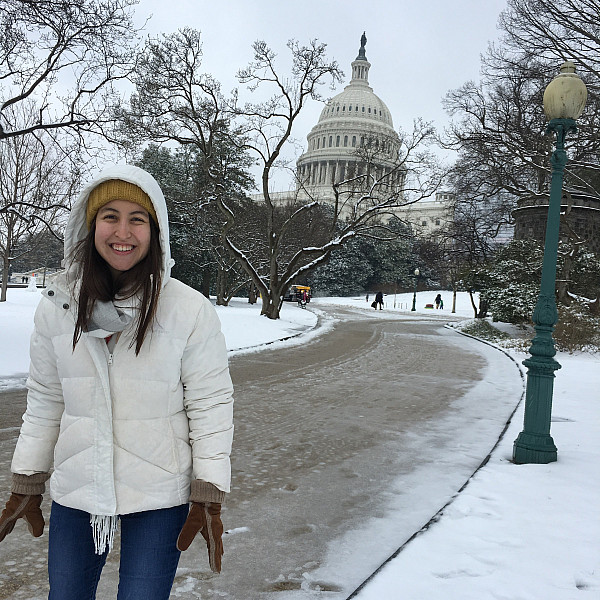News
Scholarly Perspectives on COVID-19, Part 7: A Panorama of Pandemics
November 24, 2020
November 24, 2020
Open gallery

This is the seventh story in a series on Southwestern faculty perspectives on severe acute respiratory syndrome coronavirus 2 (SARS-CoV-2) and coronavirus disease 2019 (COVID-19). Part 1 focused on biology, part 2 on mathematics, part 3 on economics, part 4 on sociology, part 5 on political science, and part 6 on psychology.
“This is a fascinating time for historians,” says Jethro Hernández Berrones, chair of Southwestern’s History Department. And with worldwide COVID-19 infections well over 55 million and death tolls skyrocketing past 1.3 million (at the time of this writing), it’s no wonder that historians, journalists, and even public-health experts and scientists are looking to the past to make sense of the present.

A short history of the history of medicine
Although widespread population-decimating diseases have punctuated human history since the species’ inception, the word pandemic was first mentioned in 1666. A, according to Merriam-Webster; writers of the time used the term to describe the last major outbreak of the bubonic plague in England, often referred to as the Great Plague of London. But the word did not go viral, so to speak, until much later, during the 1918 influenza crisis, when it recurred frequently but for a relatively short duration in newspaper and magazine headlines. References to pandemics then leveled off for many decades, until 1981, when what is now the U.S. Centers for Disease Control and Prevention (CDC) described in a report the symptoms of what would later be christened acquired immunodeficiency syndrome (AIDS). Since then, the appearance of the term has increased exponentially in the popular press alongside the names of multiple diseases: severe acute respiratory syndrome (SARS), the H1N1 “swine flu,” Middle East respiratory syndrome (MERS), the reemergence of polio, Ebola, malaria, Zika, and, of course, COVID-19.
So epidemics and pandemics have a long history, but the history of pandemics—meaning the scholarly examination of such diseases—is comparatively short. “The study of epidemic diseases is a fairly young field,” Hernández Berrones clarifies. “The history of medicine began in the 19th century, right at the time when doctors were creating institutions that unified them as what some sociologists call a profession. They started defining the what type of education people should have in order to be qualified and responsible for treating the sick by creating specific medical schools. They created hospitals in order to tend to the needs of the sick. And they also created a field called the history of medicine in order to explain what had been before and what they were changing.” The history of medicine, then, began as a way for 19th-century physicians to differentiate themselves from their predecessors, including the physickers, chirurgeons, apothecaries, and barbers who treated kings and members of the nobility but who received no standardized training, as well as the wise women and other practitioners who depended on traditional knowledge, home-spun recipes, and word-of-mouth remedies when delivering healthcare to those living in their communities.
The history of medicine was professionalized during the first decades of the 20th century, Hernández Berrones explains, but it was during the 1970s and 1980s—as the AIDS pandemic began killing what would eventually be tens of millions of people worldwide—that historians really began to focus on how epidemics spread and were contained in past centuries, from the Black Death in the Middle Ages and the smallpox outbreak during the Columbian exchange in the late 15th and 16th centuries to tuberculosis, typhoid fever, typhus, and cholera in the 19th century. Eminent historians of medicine and pioneers in the historical study of epidemic disease such as Charles Rosenberg approached disease by examining three intersecting components: the biological, which focuses on how pathogens are transmitted through vectors; the sociopolitical, which weighs the right to individual physical health with the communal right to economic well-being to determine whether measures such as school and business lockdowns, quarantine, and protective equipment should be mandated; and the epistemological, which focuses on the knowledge that societies have to understand and cope with the causes and symptoms of disease. “It is the combination of these three aspects that generate the responses to a particular epidemic,” says Hernández Berrones.
Nobody expects the Spanish flu
Of course, these three components—the biological, the sociopolitical, and the epistemological—vary widely with each epidemic and with each culture that contends with that disease, which is why comparing pandemics is so difficult. Such differences also explain why knowledge of past disease outbreaks is invaluable but also has certain limits in terms of bracing for the next one. As Albert Camus writes in his 1947 novel La Peste (translated as The Plague in English), “Everybody knows that pestilences have a way of recurring in the world, yet somehow we find it hard to believe in ones that crash down on our heads from a blue sky. There have been as many plagues as wars in history, yet always plagues and wars take people equally by surprise.” Epidemic disease, that is, plays a recurring and tragic role throughout human history, but communities and nations can never fully prepare because each emerging disease is distinct from the previous one.
“There are a lot of articles on the Internet, on social media, and in newspapers that are trying to compare the current pandemic with the one that seems to be more relatable, which is the flu pandemic [of 1918]… . And that’s a good effort because we can see lessons from the past that are applicable to the present,” Hernández Berrones remarks. For example, the biological aspects of the two diseases are similar in that both are respiratory illnesses caused by viruses (influenza A subtype H1N1 and severe acute respiratory syndrome coronavirus 2) that are shed through respiratory droplets. And epidemiologists, public-health officials, and government leaders have implemented interventions to prevent or mitigate the spread of COVID-19 that were either successful in curbing the 1918 flu or were opposite to those behaviors that worsened the earlier contagion: banning large social gatherings, closing schools, wearing masks, isolating the sick, and quarantining those who have been in close contact with infected individuals.
However, Hernández Berrones adds, the approaches to each pandemic have also differed because although somewhat similar, they are distinct viruses, which require certain tailored responses, such as disease-specific therapeutics and vaccines. Comparison between the 1918 and 2020 outbreaks is also difficult because our knowledge of disease and the tools medical professionals use to diagnose and treat such syndromes have advanced tremendously over the last century. In the past, for example, physicians might not have known that a patient was infected with a particular pathogen, so they would treat the disease more generally; now, there are diagnostic tests available so that doctors can distinguish whether a patient’s symptoms are of the flu or of COVID-19, which helps determine the correct treatment plan. Furthermore, public-health policies and treatment options change depending on the resources, needs, and behaviors of local and regional populations, so the responses to any one pandemic are actually many and varied. “And then, at the same time, scientists and doctors are discovering new ways and new expressions of the disease in different populations,” Hernández Berrones adds—discoveries that have led to warnings and special precautions for severe-COVID-susceptible groups, such as those 70 years or older, which were not applicable in responses to the 1918 flu.
Still, regardless of the inevitable limits of using comparison to predict or prevent the next pandemic, remaining ever mindful of the history of medicine and disease is crucial to avoiding complacency and to taking necessary action when a novel outbreak occurs. And as with any subject in the humanities, studying the history of epidemics can help us better understand the human experience. In 1956, author and critic H. L. Mencken noted the apathy citizens seemed to feel less than 40 years after 50 million people lost their lives to the flu: “The influenza epidemic of [1918 and] 1919, though it had an enormous mortality in the United States and was, in fact, the worst epidemic since the Middle Ages, is seldom mentioned, and most Americans have apparently forgotten it. This is not surprising. The human mind always tries to expunge the intolerable from memory, just as it tries to conceal it while current.” For U.S. journalists, politicians, and everyday citizens of the midcentury, World War I made for a better story to encapsulate the early 20th century, one of heroism, patriotism, and triumph on the battlefield—with only 116,516 American lives lost. Meanwhile, repressing the memories of the 1918 flu pandemic served to protect the fractured psyche of a nation that had reeled from 675,000 U.S. deaths, a contagion that infected more than a quarter of the country’s population, and conflicts between those who upheld a right to individual and community health versus those who believed interventions such as quarantines and masks infringed on their civil liberties. However, researching the history of pandemics like the 1918 flu gives scholars such as Hernández Berrones, their students, and the wider public a means to recovering those significant memories and interpreting how human beings experience such individual and collective traumas.
“One of the things that I think is really useful to learn from epidemics is that all of this was already present in our societies.”
Bridges across time, borders, and cultures
“One of the things that I think is really useful to learn from epidemics is that all of this was already present in our societies. Epidemics put those social, cultural, and political tensions and disputes right up front for everyone to see,” Hernández Berrones reflects. “We have seen in this epidemic very clearly, for instance, the xenophobic sentiments toward the Asian population very clearly in the U.S. and globally”—a tendency to displace blame for a disease to foreigners, which was also evident in the misnaming of the 1918 flu as “the Spanish flu” even though the pandemic may actually have originated in Kansas or in discrimination against on immigrants who were thought to be bringing diseases from their native shores. In addition, the politicization of disease prevention and mitigation efforts is nothing new. “We are navigating these tensions between individual rights and social rights,” Hernández Berrones remarks, “[which] I think has to do with a longer tradition of [debate about] state control of the population and a certain way of being used to that kind of interventionism in people’s lives.” The history of medicine has also shown us, he adds, that mortality rates are higher within traditionally underserved populations, especially African-American, Indigenous, and Hispanic populations, and that such discrepancies relate not to particular biological preconditions but instead to social positioning. “One thing that historians see again and again every time that they study disease and particularly epidemic disease,” he observes, “is that most can be tackled if we treat the socioeconomic determinants of the disease.”
So the history of medicine is an interdisciplinary field to be sure: Examining diseases of the past and present helps reveal cultural attitudes toward science and government, philosophies of individualism versus collectivism, the relationships between social standing and health and healthcare, the status of scientific thinking and medical technology, the effects of socialized healthcare systems, and the role of information sharing and health education in different geographies and throughout the ages. “So that is why historians use epidemics as a lens to look at society,” Hernández Berrones says.
And what of the future? What might the history of medicine and our developing present knowledge of COVID-19 tell us to expect when the next pandemic hits, or how might future generations of scholars look back on the 2020 coronavirus pandemic? “The interesting thing is what sort of radical change this epidemic disease will bring,” Hernández Berrones remarks. “There are larger consequences of this pandemic that are going to be hard to see in the first couple of years or even in the first couple of decades after. For historians, it’s going to take some time.”
In the short term, he explains, scholars will make use of the digital archives that institutions, such as universities and museums, have created to record people’s reactions to COVID-19, including Southwestern University’s own 20/20 Distance project through Special Collections. But being able to fully understand an epidemic’s myriad impacts on society requires much greater hindsight. For example, he explains, “There are historians who argue that the rise of modern societies [through European exploration and the foundations of capitalism] came as a consequence of the Black Death in the 14th century. … And one of the consequences of the Columbian exchange was that Europeans brought smallpox, a disease that decimated populations and had a huge impact on the downfall of the Aztec and Inca Empires and so many nomadic populations in North America and South America. But it took 200 to 300 years for historians to realize that was the case. So the deeper social and cultural impacts of this epidemic are going to take a while for historians to realize.”
Hernández Berrones hopes that those future historians will look back at COVID-19 and report that it increased individuals’ willingness to care for and protect one another. “My hope,” he shares, “is that through the Internet, social media, videos, and news, people are being exposed to the many unintended consequences of political decisions about health and to the challenges of vulnerable populations everywhere—in the U.S. and also in other countries. Hopefully, this tide of information will show people how fragile we are as a society, and I hope that this pandemic creates some sort of social consciousness that reduces individualism and [inspires] a push to create change.”
“I hope that this pandemic creates some sort of social consciousness that reduces individualism and [inspires] a push to create change.”
To do so, however, we would have to diverge from the mid-20th-century amnesia Mencken observed in the survivors and descendants of those who witnessed firsthand the 1918 flu pandemic only to “expunge the intolerable from memory.” Luckily, we have historians of medicine to help us document, recover, and analyze those seemingly intolerable experiences and to apply their lessons to the challenges of the present. All the while, as Hernández Berrones’s hopes for increased caring for our fellow human beings and the most vulnerable populations in society reveal, studying the history of disease ultimately serves as a pathway to maintaining our empathy. In a time when it is all too easy to think of COVID-19 and previous widespread diseases in terms of cold statistics, such as infection rates and death tolls, historians continue to remind us of the deeply human stories that emerge from a pandemic—of fear, loss, and trauma but also of discovery, survival, and change.
Bibliography and further reading
- John M. Barry, The Great Influenza: The Story of the Deadliest Pandemic in History (Penguin, 2005)
- Nancy Bristow, American Pandemic: The Lost Worlds of the 1918 Influenza Pandemic (Oxford UP, 2017)
- Marcus Cueto, The Return of Epidemics: Health and Society in Peru during the Twentieth Century (Routledge, 2017)
- Steven Johnson, The Ghost Map: The Story of London’s Most Terrifying Epidemic—and How It Changed Science, Cities, and the Modern World (Riverhead, 2006)
- Mark Honigsbaum, The Pandemic Century: One Hundred Years of Panic, Hysteria, and Hubris (Norton, 2019)
- Christos Lynteris, “Plague Masks: The Visual Emergence of Antiepidemic Personal Protection Equipment,” Medical Anthropology vol. 37 (2018)
- Christian W. McMillen, Pandemics: A Very Short Introduction (Oxford University Press, 2016)
- Graham Mooney, “How to Talk about Freedom during a Pandemic,” The Atlantic (2020)
- Charles Rosenberg, The Cholera Years: The United States in 1832, 1849, and 1866 (University of Chicago Press, 1987)
- Charles Rosenberg, “Disease in History: Frames and Framers,” The Milbank Quarterly (1989)
- Laura Spinney, Pale Rider: The Spanish Flu of 1918 and How It Changed the World (PublicAffairs, 2017)
- Science History Institute, “Spit Spreads Death,” Distillations: Using Stories from Science’s Past to Understand Our World (2020)
- Smithsonian National Museum of American History, Pandemic Perspectives: Stories through Collections (2020)
- Jacob Steere-Williams, The Filth Disease: Typhoid Fever and the Practices of Epidemiology in Victorian England (University of Rochester Press, 2020)


















